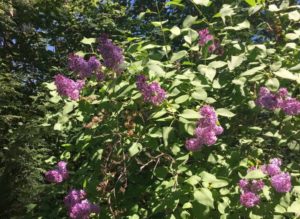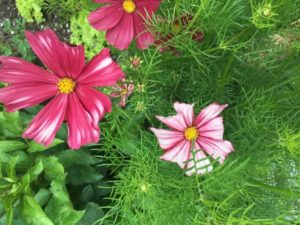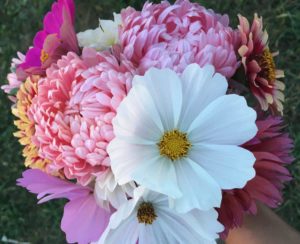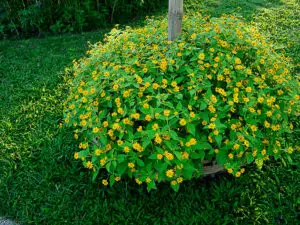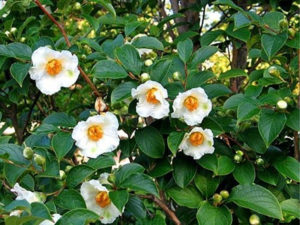Salpiglossis, also known as painted tongue plants, is an annual plant that puts out the most beautiful petunia-like flowers that hang off a trailing vine.
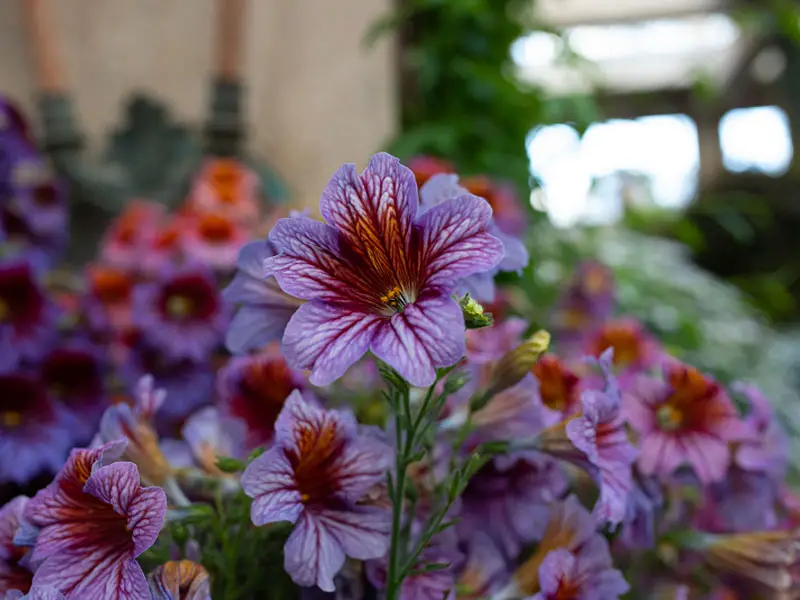
Sometimes the flowers can be more than one color on an individual plant.
The flowers themselves can have multicolored veins from the inside out.
Painted Tongue Plants are originally from South America and like cool climates.
They grow well in the more Northern areas of the US in USDA zones 6-11, but if you start them from seed and wait until the last frost date in the Spring, there are places you can plant them in Alaska.
| Scientific Name | Salpiglossis sinuata, S. atropurpurea, S.coccinea, S. purpurea |
| Common Name | Painted Tongue Plant |
| Hardy | half-hardy annual, USDA hardiness zones 6-11 |
| Indoor/Outdoor | outdoor |
| Water | Drought tolerant, water only when the top 2 inches of topsoil is dry. |
| Light | Full sun or filtered shade in warmer climates |
| Soil PH | Moist soil. PH 6.1 to 7.5 (mildly acidic to neutral) |
| Flower | Petunia-trumpet-like shape, red, reddish-orange, mahogany, occasionally yellow, purple, deep blue, pink. They Bloom from the summer to the first frost. |
| Growing Difficulty | Low-maintenance and easy to grow. Need to be started indoors |
Salpiglossis Appearance and Characteristics
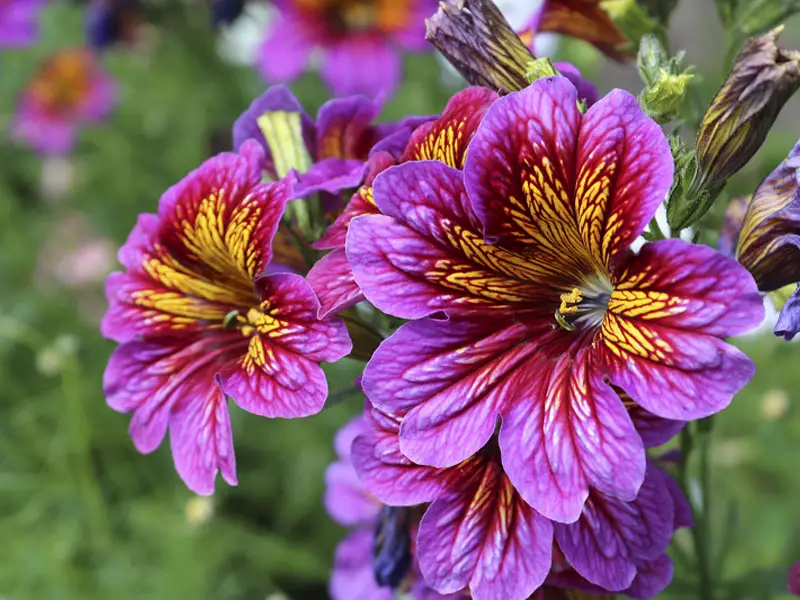
The height of the plants is 12-18 inches.
The leaves are serrated with green surfaces and sometimes lighter veins.
Salpiglossis sinuata have very beautiful and unusual flowers in the shape of a trumpet or petunia, in many colors from blue to purple, dark orange, red, reddish-orange, mahogany, blue to purple and lavender, yellow and white.
The flowers have an internal contrasting vein pattern that often stands out, making them look like stained glass.
The petals have a velvety touch.
The Painted Tongue flowers have no scent.
Bees and Butterflies are attracted to the Salpiglossis Surata flower; however, they may not see the colors as humans do.
The bees see flower color using ultraviolet light.
Female bees accomplish 80 percent of insect crop pollination, and any patterns on flowers are invisible to humans.
Salpiglossis Planting Guide
There are three ways to plant Salpiglossis sintata plants.
Direct seeding when there is no risk of frost, self-starting your seeds indoors to give you a head start, or if you live in a cooler climate, or buying seedlings directly from the nursery.
Direct Seeding
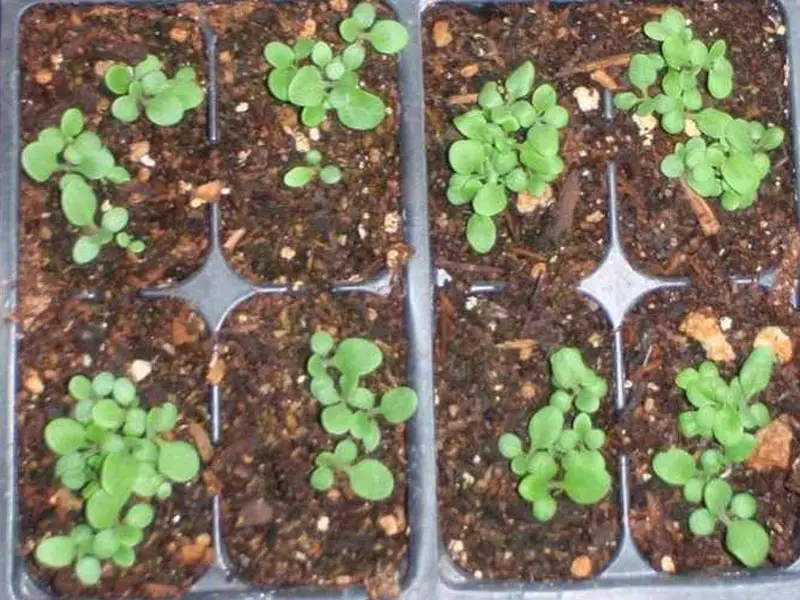
Direct seeding requires you to prepare your soil and plant the seeds ¼ inch deep.
Cover the seeds because germination is light-sensitive. Water your seedlings very gently.
The soil needs to be well-drained. Seeds germinate between 14-30 days.
Make sure you sow your seed nine to twelve inches apart.
Nursery Transplants
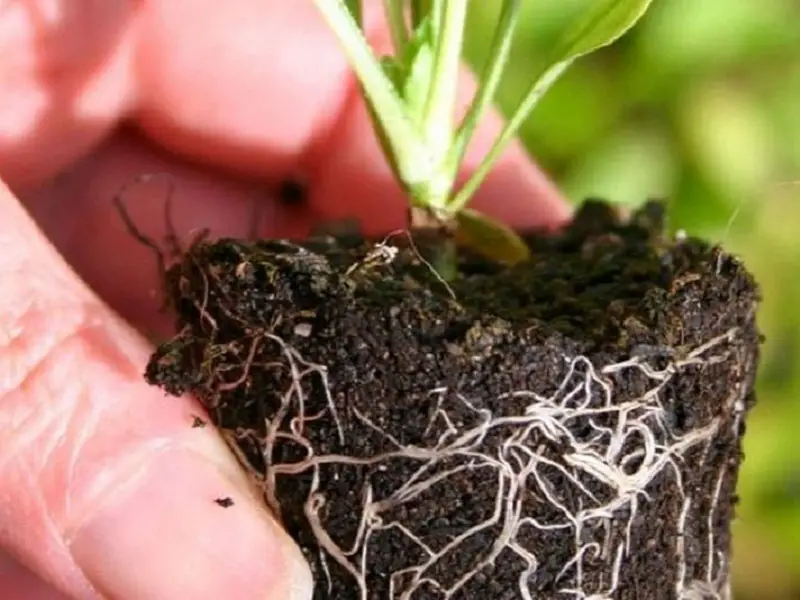
You can buy transplants bought at the nursery and plants in early spring.
Keep them moist and “harden off” your seeds before you plant them into the ground. (see below)
Be very gentle when transplanting as you do not want to disturb the root system.
Pre Planting Indoors
Salpiglossis sinuata can also be planted by seeds indoors in individual starter containers, eight to 10 weeks before the last frost when they will be ready to plant outdoors in early spring. Here are some useful steps:
- Plant the seeds ¼ inch from the surface and cover lightly. Keep temperatures around 70 to 75 degrees F. Keep the plants away from the light as Salpiglossis sintata needs darkness to germinate. Germination of the seeds should take a week to 14 days.
- Once the seedlings produce tiny leaves, put them in the light. You can use fluorescent grow lights and have the plants three to four inches beneath the light source (note: incandescent is too hot).
- Expose them to light but not more than sixteen hours per day. Water them as needed.
- If you are using cells, you may have to transplant your seedlings to three or four-inch pots when seedlings have at least two leaves, so they have enough of a strong root system by the time it comes to put them in your garden outside.
- Keep the plants moist but not soggy and in well-drained soil. Pinch off the growing tip of each stem to encourage bushier plants.
- Once they get bigger, stronger, and closer to planting outdoors, you can put them in a sunny spot indoors, like near a window.
Hardening off
Whether your seedlings wether started at home or purchased in a nursery before planting them inside the ground.
Acclimate young seedlings by placing them in a shady, wind-protected spot outdoors.
Plants grown indoors will not be used to wind and direct sunlight, so be gentle and patient when you first take them out.
Placing them by the side of the house or under a roof that provides shade is a good idea.
Slowly expose your plants to direct sunlight. Start with an hour of direct sunlight the first day and increase the time with hourly or bi-hourly increments each day until your plants can handle full sun and wind. If your seedlings start to wilt, put them back in the shade.
This process is known as “hardening off.” It prevents the seedlings from sunburn and shock.
Planting in the Ground
Plant seedlings once fully acclimated to the sun spacing them 9 to 12 inches apart or in individual containers.
Prepare your soil by removing weeds and turning the soil to a depth of six to twelve inches in order to aerate it and mix in some good organic matter.
Add a light layer of mulch around your seedling to a depth of no more than two inches.
This will preserve the moisture in the soil and discourage weeds.
Continue to water your plants until they are established. Salpiglossis sinuata is drought-tolerant, so water only when the top 2 inches of topsoil is dry.
That does not mean they don’t need water.
Water about one inch per week during the growing season.
Make sure they are watered more during dry spells.
Weed as needed.
Weeds compete with the plants’ need for water and available nutrients.
Fertilize
It is recommended to fertilize bi-monthly to insure continued blooms.
Water-soluble fertilizer should be used diluted to half strength.
Deadhead flowers once your plants start to bloom.
What is Deadheading and Why?
Deadheading flowers are the removal of spent blossoms from the plant.
Once the flowers are pollinated, seed pods or capsules form at the expense of further growth.
Instead of putting energy into flowering, the plant starts to put energy into seed production.
Deadheading can prolong flowers blooming.
Deadheading flowers is a means to continue flower production.
As plants blooming decreases, pinch off or cut the flower stem below the withered flower and just above the first full set of leaves.
Do this to all the dead flowers on the plant.
Get into the habit of deadheading periodically in your garden, so the task is ongoing and easier.
Water
Salpiglossis plants are drought tolerant and only water them when the top two inches of topsoil are dry—water about one inch per week during the growing season.
Make sure they are watered more during dry spells. They need well-drained soil, and it should not be overwatered or soggy.
Some people choose to use a continuous drip system or trickle system, which delivers low-pressure water to the plants.
Note: If you use an overhead sprinkler system, make sure you water early so that the leaves have a chance to dry out before the cooler nightfall.
Light
Painted Tongue plants love sun or filtered shade, especially if you live in a warmer climate.
They like cool nights around 50 degrees F.
Seed Collecting
Allow the seeds to dry on the plant.
Break open the pods to collect the seeds in an envelope—label and store them in a dark, dry place.
Propagation and Pruning
Pruning the inside tips of the young plant can encourage more compact, bushier growth.
Advantages of Growing Salpiglossis
The flowers of Salpiglossis are unique.
They are shaped like a petunia in that they are trumpet-shaped.
The petals have a velvety texture.
The flowers are often multicolored. The internal veins are one shade, while the main flower is a different color or shade.
Some plants even have different colored flowers on one plant.
They make beautiful colorful cut flowers and can also be planted in containers outside.
The flowers of Salpiglossis are unique.
They are shaped like a petunia in that they are trumpet-shaped.
The petals have a velvety texture.
The flowers are often multicolored. The internal veins are one shade, while the main flower is a different color or shade.
Some plants even have different colored flowers on one plant.
They make beautiful colorful cut flowers and can also be planted in containers outside.
Salpiglossis Diseases, Pests, and Problems
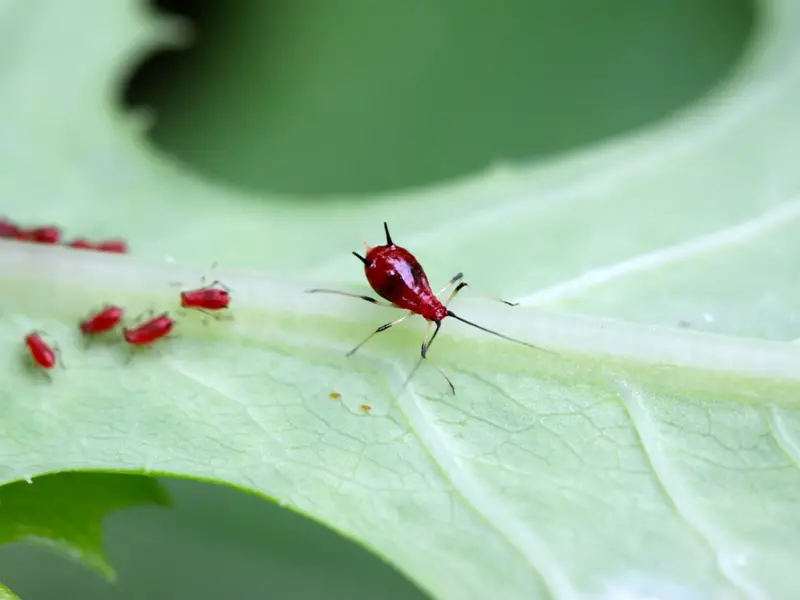
Monitor your plants for diseases and pests.
Check with your local Cooperative Extension Service in your area.
Salpiglossis is pretty pest-free.
Verticillium-Salpiglossis sinuata is susceptible to Verticillium wilt; a small plant can die suddenly.
It is recommended to avoid planting in the same place each year.
Root Rot
Numerous pathogens and fungi can affect the root system of plants.
Prevent this by rotating your crops and plants and discard diseased plants. Do not put them in your compost bin.
Aphids
These pests can cause a lot of damage to the leaves and fruit of plants.
A mixture of water and dish soap or water-alcohol and dish soap can be strongly sprayed on the plants.
If dish soap does not help there are more insecticidal soaps that are stronger that usually are available at your nursery or online.
Note: Parts of the plant are poisonous if ingested.
Salpiglossis Seeds
1000 Seeds

Indoor and Outdoor Seeds

200 Mixed Colored Seeds


FAQs
Where is Salpiglossis from?
Originally from the foothills of the Andes Mountains of Chile, they were introduced to the US around 1824.
Salpiglossis comes from the two Greek words “Trumpet” and “tongue.”


